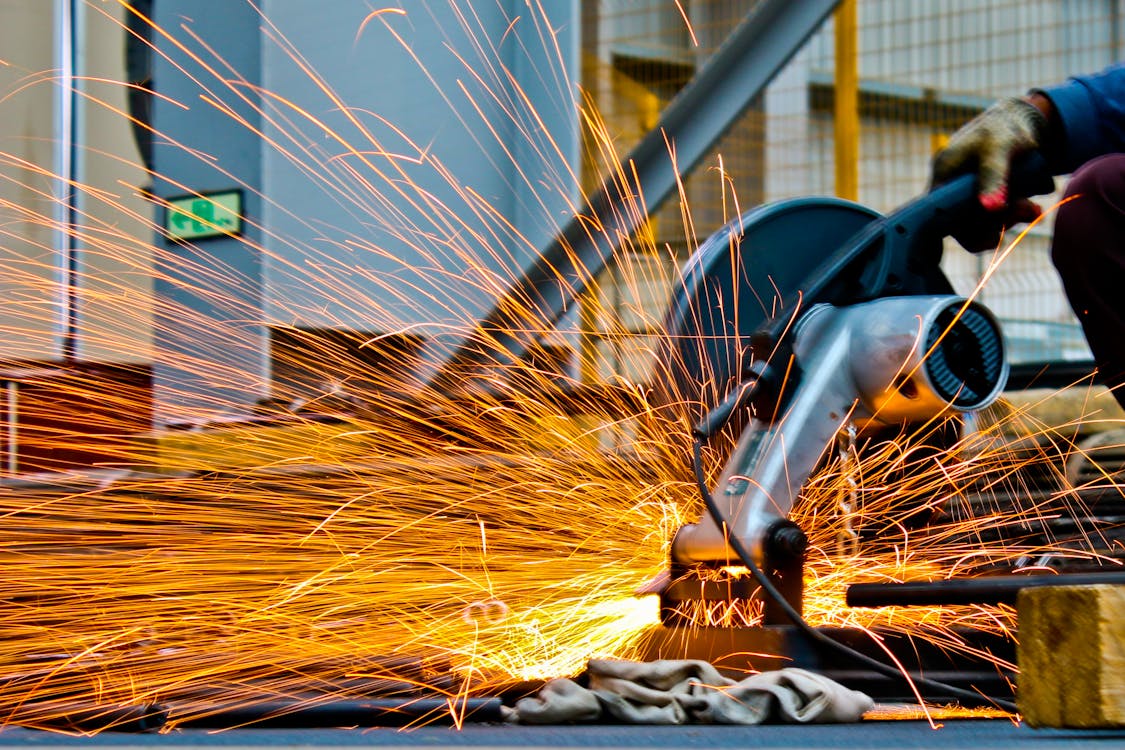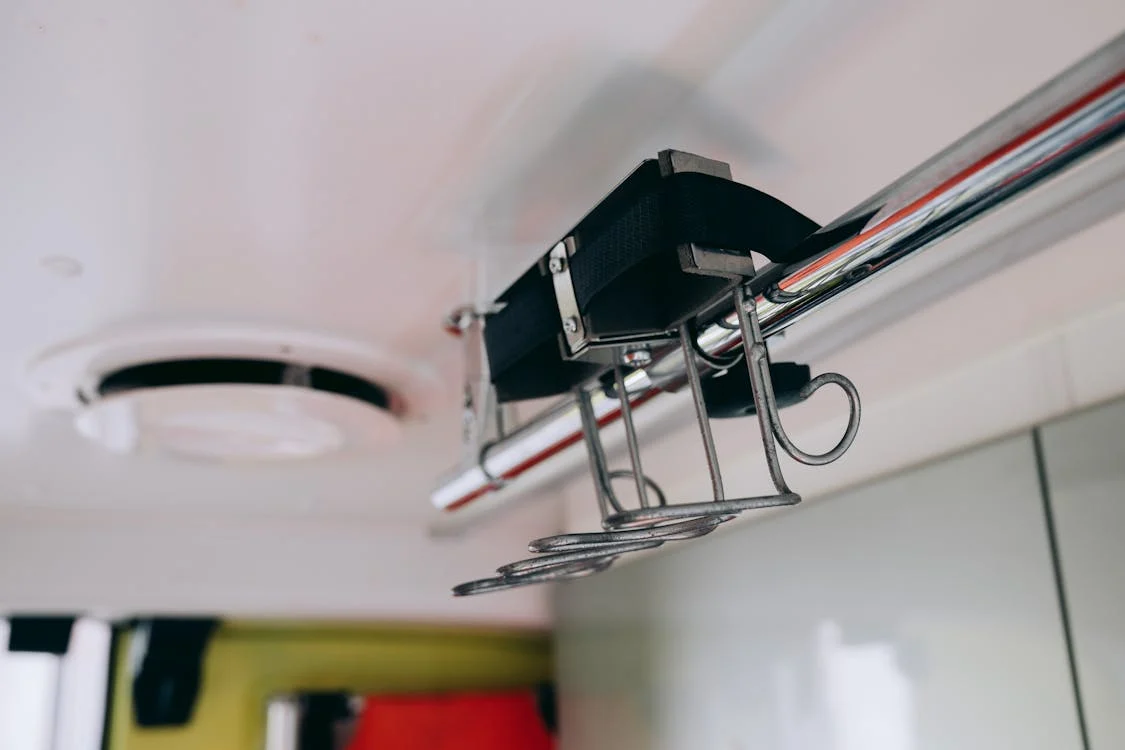While standard conex trailers for sale are perfect for most business projects, sometimes some modifications are needed. Technically, modified containers like reefer and side-opening containers are available with considerable customizations that differentiate them from their standard counterparts.
However, sometimes conex trailers for sale with some modifications are all that customers need. They occupy a middle ground between standard and modified containers since their modifications aren’t as extensive.
Even so, these containers with slight modifications are just as useful. Let’s see the popular modifications builders often install in their standard containers here!
Also Read: Avoiding Fake CSC Plates in Affordable Storage Containers
Popular Custom Features for Shipping Containers

The following custom features are common across the industry as what builders use in their modified standard containers.
Custom Paint Job
A fresh coat of paint isn’t just about aesthetics – it’s branding, weatherproofing, and personality in a package. For businesses, custom paint acts as a 24/7 billboard that showcases the company’s personality and outlook in the industry.
Meanwhile, homeowners might opt for earthy greens to blend with garden settings or bold geometric patterns for a modern art studio. Advanced techniques like anti-corrosive primers and UV-resistant finishes ensuring longevity, even in harsh climates.
Entry Doors
Gone are the days of using heavy cargo doors for routine access. Modern modifications offer tailored entry solutions, such as:
- Personnel Doors: Using steel frames with deadbolts, these insulated doors (common in offices) reduce heat transfer and enhance security.
- Roll-Up Doors: Ideal for workshops or retail spaces, these lightweight aluminum doors glide open smoothly, allowing forklift access without sacrificing security.
- Sliding Glass Doors: Framed in vinyl, these add natural light to cafes or studios while maintaining lockable security.
- Side Doors: Reinforced cargo-style doors on the container’s long side simplify loading bulky equipment.
Builders can use both a personnel door for daily access and a roll-up door for stock deliveries in the container to improve accessibility.
Electrical and Lighting Systems
Builders can turn a dark metal box into a functional workspace with smart electrical upgrades. For instance, they can set up 10–32 AMP power points for everything from industrial tools to espresso machines.
LED strip lighting along ceilings creates bright, energy-efficient workspaces, while recessed spotlights add ambiance to lounges. For outdoor setups, motion-activated floodlights can deter trespassers.
Flooring Options
Although standard container floor material is good enough, the right floor balances durability and comfort:
- Epoxy-Coated Plywood: Seals original floors against moisture, ideal for garages.
- Coin Vinyl: Slip-resistant and easy to hose down, perfect for gyms or greenhouses.
- Imitation Wood Planks: Warmth without the cost of hardwood.
- Steel Tread Plate: For workshops, welding sparks won’t faze this rugged surface.
HVAC
Climate control is non-negotiable for habitable spaces. PTAC units (like those in hotels) fit neatly into wall cutouts, cooling a 40ft container efficiently.
For larger setups, split-system ACs with heat pumps handle summer cooling and winter warmth. In dusty environments, HVAC filters are popular since they can protect sensitive equipment.
Insulation Features
Adding insulation to standard containers can help regulate temperatures and reduce condensation. The following insulation materials are popular among container builders:
- Spray Foam: Highest R-value (6.5 per inch) that expands into cracks for airtight seals.
- Batt Insulation: Cost-effective fiberglass (R-13) for offices that builders install between steel studs.
- Mineral Wool: Fire-resistant and mold-proof, great for coastal climates.
Locking Mechanisms
Padlocks are arguably the most popular security measure conex trailers for sale used to keep cargo secure. However, other security measures can complement padlocks in securing the containers:
- Cam Locks: Standard on cargo doors, these steel rods latch into floor sockets.
- Keypad Deadbolts: Assign temporary codes for staff or renters.
- Lockboxes: Heavy-duty steel shrouds protect padlocks from bolt cutters.
Modular Strut Mounts
These adjustable aluminum rails (Unistrut systems) let you reconfigure shelving, lighting, or machinery without welding. Perfect for evolving workspaces!
Stud Framings (Wood/Steel)
Both of these stud framing types are perfect for many shipping container types:
- Steel Studs: Non-combustible and ideal for humid areas, spaced 24″ apart for drywall.
- Wood Studs: Easier for DIYers to modify, cheaper ($2.50 vs. $4 per linear foot for steel).
Shelves
Adding shelves can help users manage and arrange their cargo inside the container if the size suffices:
- Cantilever Shelving: Adjustable steel arms hold up to 500 lbs per shelf.
- Pallet Racking: For warehouses, with 8ft aisles for forklift access.
Windows and Skylights
Natural light transforms containers into inviting spaces. If users want to convert conex trailers for sale into container homes or offices, they can add these to their new abodes:
- Clerestory Windows: High horizontal bands provide privacy + daylight.
- Double-Pane Skylights: UV-filtering glass reduces heat gain by 30%.
- Security Grilles: Retractable steel bars protect ground-level windows.
Process of Installing Modification Features for Shipping Containers

So, how does a shipping container builder like Tradecorp install the modifications during production? The general process is as follows:
Preference Discussion
The process starts when customers give a short preview of how their containers would look in the quote form. In the form, they can explain that they want standard containers with additional features like security grilles or steel studs.
After that, the container builder will respond and discuss the feasibility of such requests. In the discussion process, the customer and the builder will talk things over, including the following steps.
Project Estimation
As we know, the more extensive the modifications are, the pricier the final product will become. Containers with custom paint and shelving won’t probably differ that far from standard containers, but it’s different with customizations like plumbing and lighting systems.
Furthermore, timelines range from 2 weeks for paint jobs to 3 months for complex builds. Because of that, make sure you won’t miss your business project’s deadline because of the waiting.
Drafting and Scheduling
Engineers use CAD software to create 3D models, ensuring modifications won’t compromise structural integrity. A 40ft office container might follow this schedule:
- Week 1: Cut door/window openings, reinforce walls
- Week 2: Install insulation, electrical wiring
- Week 3: Mount HVAC, finish interiors
- Week 4: Paint, final inspections
Shipping Container Production
At this point, builders start producing the containers based on the customer’s requests. Specialized workshops handle tasks like plasma cutting to cut windows precisely without warping steel and setting MIG-welded door frames to handle 120mph winds.
During this phase, the builder must produce the container within the agreed timeframe. By doing so, it can help customers procure the container faster.
Project Completion
At last, the production phase is finished, and the container builder can deliver the container to the customer. However, some final walkthroughs like the following are important to do before delivery:
- Air leaks (smoke pencils detect drafts)
- Electrical load testing (20% over planned usage)
- ADA compliance (ramps, door widths)
Delivery
The builder now delivers the container to the customer’s address, helped with the assistance of its logistics team. Alternatively, the customer can pick up the container from the production site with their transportation means.
Also Read: Metal Cargo Containers for Sale and How to Sell Them: A Guide
Conclusion
With these modifications, custom conex trailers for sale can increase their overall worth and usability to their users. Trusting builders like Tradecorp is also the key to unlocking their potential thanks to Tradecorp’s unending commitment to satisfy customers. Want to know how? Contact Tradecorp today via its quote form and we’ll help you design and produce your custom container!


